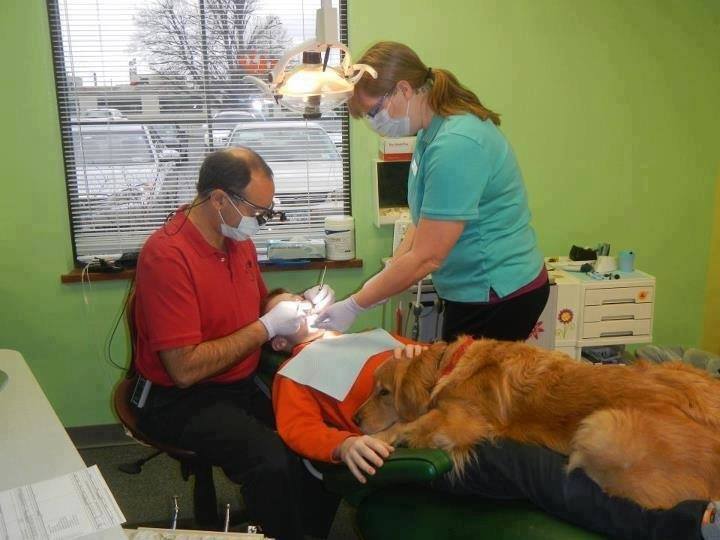Parental Guide: Getting Ready for Lip Tie Surgery
The moment you realize your child might be facing a lip tie issue is a moment filled with mixed emotions. Understanding the path ahead can seem daunting, and it’s only natural to seek guidance and reassurance. Lip tie surgery, albeit a minor procedure, marks a significant step in ensuring your child’s future health and well-being. It’s a decision enveloped in the hope of overcoming feeding challenges, ensuring proper dental development, and fostering a happier, healthier life for your little one.
Understanding Lip Tie and Its Implications
Before considering surgical options for your child, gaining a deep understanding of lip tie and its potential effects is essential. A lip tie occurs when the frenulum, which is the small fold of tissue that connects the upper lip to the gum above the front teeth, is abnormally thick or tight. This condition can significantly restrict the movement of the lip, leading to a range of complications that can affect your child’s health and development.
One of the most immediate concerns for newborns with a lip tie is breastfeeding difficulty. The restricted movement of the upper lip can make it challenging for the baby to latch onto the breast properly, leading to inadequate feeding, frustration for both mother and child and potential weight loss or failure to thrive in the infant. Additionally, the effort required to nurse effectively can cause discomfort and nipple damage for the breastfeeding parent, further complicating this crucial bonding and nutritional period.
As children grow, a lip tie can continue to impact their well-being in several ways. For example, the limited mobility of the lip may result in gaps between the front teeth, known as diastema, which can affect the aesthetics of the smile and may require orthodontic treatment to correct. Speech development can also be hindered as the lip tie may interfere with the formation of certain sounds, leading to speech impediments or delays that might necessitate speech therapy.
Furthermore, a lip tie can contribute to oral hygiene challenges. The tight frenulum can trap food particles and make it difficult to clean certain areas of the mouth thoroughly, increasing the risk of tooth decay, gum disease, and other oral health issues.
Understanding these implications is vital for parents and caregivers when considering the path forward, including the possibility of a surgical procedure to correct the lip tie. Armed with this knowledge, they can engage in informed discussions with healthcare professionals to determine the best course of action for their child’s health and development.

Lip Tie Surgery
Choosing the Right Specialist
Selecting the right specialist for your child’s lip tie surgery is a decision that weighs heavily on any parent’s mind. Knowing the stakes are high, it’s crucial to approach this choice with diligence and informed criteria. Here’s a comprehensive guide to navigating the selection process, ensuring that you find a healthcare provider well-equipped to offer the best care possible.
- Specialization and Experience: Start by narrowing your search to pediatric dental surgeons or qualified ENT specialists with a proven track record in treating lip ties. These professionals should have specific training and a considerable amount of experience in pediatric oral surgeries, demonstrating their competence in handling delicate cases like your child’s.
- Credentials and Certifications: Verify the specialist’s credentials, including board certification in their field. Board certification is an assurance of the specialist’s expertise and commitment to maintaining excellence in their practice. Also, look for memberships in reputable medical associations, which often require members to adhere to strict professional standards.
- Approach to Care: Choose a specialist who prioritizes a conservative approach to treatment, recommending surgery only when absolutely necessary. Their willingness to explore and exhaust non-surgical interventions first is a testament to a patient-centered approach to care.
- Communication Skills: Effective communication is key. The right specialist should not only be skilled in surgery but also in explaining complex medical information in understandable terms. During consultations, observe if they listen attentively, address your concerns with empathy, and offer clear, comprehensive answers to your questions.
- Patient Reviews and Testimonials: Seek out feedback from other parents whose children have undergone lip tie surgery with the specialist in question. Patient reviews can provide insights into the specialist’s bedside manner, the success of the surgeries performed, and the overall satisfaction with the care received.
- Post-Surgery Support: Confirm that the specialist offers robust post-surgery support, including detailed care instructions and availability for follow-up questions or concerns. Knowing that your chosen professional is accessible and supportive even after the procedure can provide significant peace of mind.
By meticulously considering these factors, you can feel more confident in your choice of a specialist for your child’s lip tie surgery. Remember, the right provider will not only possess the requisite skills and experience but will also align with your values and expectations, ensuring a positive outcome for your child’s health and comfort.
Preparing Your Child for Surgery
Preparing your child for surgery is a task that demands sensitivity, patience, and a positive outlook. The goal is to ensure that your little one feels safe, supported, and as relaxed as possible throughout the process. Here are some strategies to help you communicate effectively with your child and create a nurturing environment that fosters calmness and confidence in the face of surgery.
- Use Age-Appropriate Explanations: Tailor your explanation of the surgery to your child’s age and comprehension level. Use simple, reassuring words to describe the procedure, focusing on the outcome rather than the process. For younger children, metaphors or storybooks about going to the doctor can make the concept more accessible.
- Maintain a Positive Tone: Children are incredibly perceptive and can pick up on their parent’s emotions easily. Strive to maintain an optimistic tone when discussing the surgery. Highlight the benefits, like feeling better or being able to do activities they currently can’t enjoy due to the lip tie.
- Encourage Questions: Invite your child to express any thoughts or concerns they might have about the surgery. Answer their questions honestly but reassuringly, ensuring them that they will be in safe hands and that you’ll be there with them throughout the process.
- Role Play and Visualization: Use role-playing games to simulate the day of the surgery, from waking up and going to the hospital to the recovery phase. This can help demystify the experience and make it less daunting. Visualization techniques, where you encourage your child to imagine a happy place or a successful outcome, can also ease anxiety.
- Create a Comfort Kit: Together with your child, prepare a small bag of comfort items to take to the hospital, such as a favorite toy, blanket, or book. Having familiar items on hand can provide a sense of security and comfort in a new environment.
- Plan for Post-Surgery Comfort: Discuss how you’ll spend the recovery period, planning special activities or rest times that your child can look forward to. This gives them a positive focus beyond the surgery itself.
- Stay Calm and Supportive: Your child looks to you for cues on how to react. By staying calm and collected, you signal that there’s nothing to fear, providing a powerful model of courage and resilience.
By approaching the topic with care, openness, and positivity, you can help alleviate your child’s fears about surgery and make the experience as comfortable as possible for both of you. Remember, your support and reassurance are key to helping your child feel secure and loved through every step of this journey.
Post-Surgery Care and Recovery
The period following lip tie surgery is critical for ensuring a swift and comfortable recovery for your child. Although the procedure is generally minor and recovery times are quick, proper post-surgery care is paramount to avoid complications and ensure the best possible healing process. This guide will walk you through essential steps in pain management, dietary adjustments, and oral hygiene practices tailored to support your child’s recovery.
First and foremost, managing your child’s pain after surgery is vital for their comfort and wellbeing. Depending on the age of your child, your healthcare provider may recommend suitable pain relief options. These could range from cold compresses gently applied to the affected area, to over-the-counter pain relief medications adjusted for children. It’s important to closely follow the dosage and instructions provided by your healthcare professional to safely manage discomfort.
Dietary adjustments post-surgery play a crucial role in the healing process. In the initial days following the procedure, it’s advisable to offer your child soft, cool foods that require minimal chewing, such as yogurt, applesauce, or smoothies. These foods not only soothe the surgical site but also reduce the risk of irritating or reopening the wound. Ensure your child stays hydrated with plenty of fluids, steering clear of hot beverages that could exacerbate the healing tissue.
Oral hygiene cannot be overlooked during the recovery phase. Maintaining a clean mouth is essential to prevent infection at the surgery site. However, conventional brushing might be challenging immediately after the procedure. Instead, consider using a soft, damp cloth to gently clean around the area without applying direct pressure to it. Your dentist or surgeon might also recommend a saline rinse or a specific oral hygiene solution designed for post-surgical care.
Lastly, being vigilant about signs of potential complications is crucial. Monitor your child’s recovery for any unusual symptoms such as excessive bleeding, fever, unusual swelling, or signs of infection. Should any of these arise, contact your healthcare provider promptly for advice.
By adhering to these guidelines for post-surgery care and recovery, you can help ensure your child’s healing process is as comfortable and rapid as possible. Remember, a calm and informed approach goes a long way in supporting your little one through their recovery.
Feeding Post-Surgery
Navigating the feeding process post-lip tie surgery is a pivotal step toward ensuring your baby’s nutritional intake and comfort are maintained. This phase presents an opportunity to overcome previous challenges and improve feeding experiences for both you and your little one. Here, we’ll explore strategies and tips to successfully reintroduce breastfeeding or bottle-feeding, focusing on achieving a proper latch and employing techniques that foster feeding success.
Breastfeeding after lip tie surgery can witness significant improvement, as the procedure often frees up the baby’s lip movement, making it easier for them to latch effectively. To support this transition, start with a calm and comfortable environment to encourage a relaxed feeding session. Skin-to-skin contact before feeding can also help soothe and prepare your baby. When introducing the breast, guide your baby’s chin first, encouraging their mouth to open wide before latching, ensuring that they take in as much of the areola as possible. This technique aids in establishing a deep latch, which is essential for efficient milk extraction and reducing nipple discomfort.
For bottle-feeding, the focus remains on ensuring a proper latch and the right bottle nipple flow to match your baby’s new feeding capability. Opt for nipples that mimic the natural feel and pace of breastfeeding, promoting a seamless transition between breast and bottle if you’re combining feeding methods. Experiment with different holds that allow your baby to tilt their head back slightly, encouraging a natural sucking motion similar to breastfeeding. Observing your baby’s cues during bottle feeds is key; look for steady, rhythmic sucking and swallowing as indicators of a successful feed.

Lip Tie Surgery
Patience is paramount in these initial days post-surgery. Your baby may need time to adjust to the newfound freedom of movement and relearn how to latch effectively. If you encounter difficulties, don’t hesitate to reach out to a lactation consultant who can provide personalized advice and support tailored to your unique situation.
Finally, celebrate the small victories along the way. Each successful feeding session post-surgery is a step forward in your baby’s development and a testament to your dedication and care as a parent. With time, perseverance, and the right techniques, feeding post-surgery can evolve into a more enjoyable experience, enhancing the bond between you and your baby.
Long-Term Care and Monitoring
The completion of lip tie surgery and the initial recovery phase mark just the beginning of your child’s path to improved oral function and overall well-being. Long-term care and vigilant monitoring are instrumental in ensuring the enduring success of the procedure. This commitment to ongoing oversight not only supports optimal healing but also lays the foundation for your child’s healthy dental development and speech abilities as they grow.
Post-surgery, it’s crucial to have a roadmap for what lies ahead. Regular follow-up appointments with your healthcare provider will play a pivotal role. These visits allow for the assessment of the healing process, ensuring that the surgical site is healing properly and that there are no signs of reattachment or complications. Additionally, these appointments provide a valuable opportunity for you to discuss any concerns or observations regarding your child’s feeding, dental health, or speech development.
Monitoring your child’s dental development is another essential aspect of long-term care. The surgery aims to prevent the dental issues often associated with lip ties, such as gaps between teeth or misalignment. Regular dental check-ups will help track your child’s progress, ensuring that their teeth are aligning correctly and identifying any potential issues early on. These visits can also offer guidance on maintaining proper oral hygiene practices tailored to your child’s needs.
Addressing speech issues is equally important. While correcting a lip tie can significantly improve speech development by facilitating better movement of the lip, some children may still face challenges. Early intervention with speech therapy can be incredibly beneficial. A speech therapist can work with your child to strengthen their oral muscles and improve articulation, enhancing their communication skills.
Understanding the importance of continued care and monitoring underscores your role in supporting your child’s long-term health and development. By keeping abreast of follow-up appointments, dental check-ups, and potential speech interventions, you are proactively contributing to your child’s ability to thrive. This ongoing commitment ensures that the benefits of lip tie surgery extend well into the future, fostering a foundation of health, confidence, and well-being for your child.
Conclusion
Preparing for your child’s lip tie surgery can be an overwhelming experience, but armed with the right information and support, you can navigate this path with confidence. Each step, from understanding the condition to post-surgery care, plays a crucial role in ensuring a successful outcome and a brighter, healthier future for your child. Remember, you’re not alone in this journey; countless parents have walked this path before you, finding strength in knowledge and solace in preparation.
Evergreen Pediatric Dentistry
https://www.google.com/maps?cid=14720788683151219551
12910 Totem Lake Blvd NE #103, Kirkland, WA 98034, United States
(425) 814-3196
https://evergreenkidsdentist.com/


